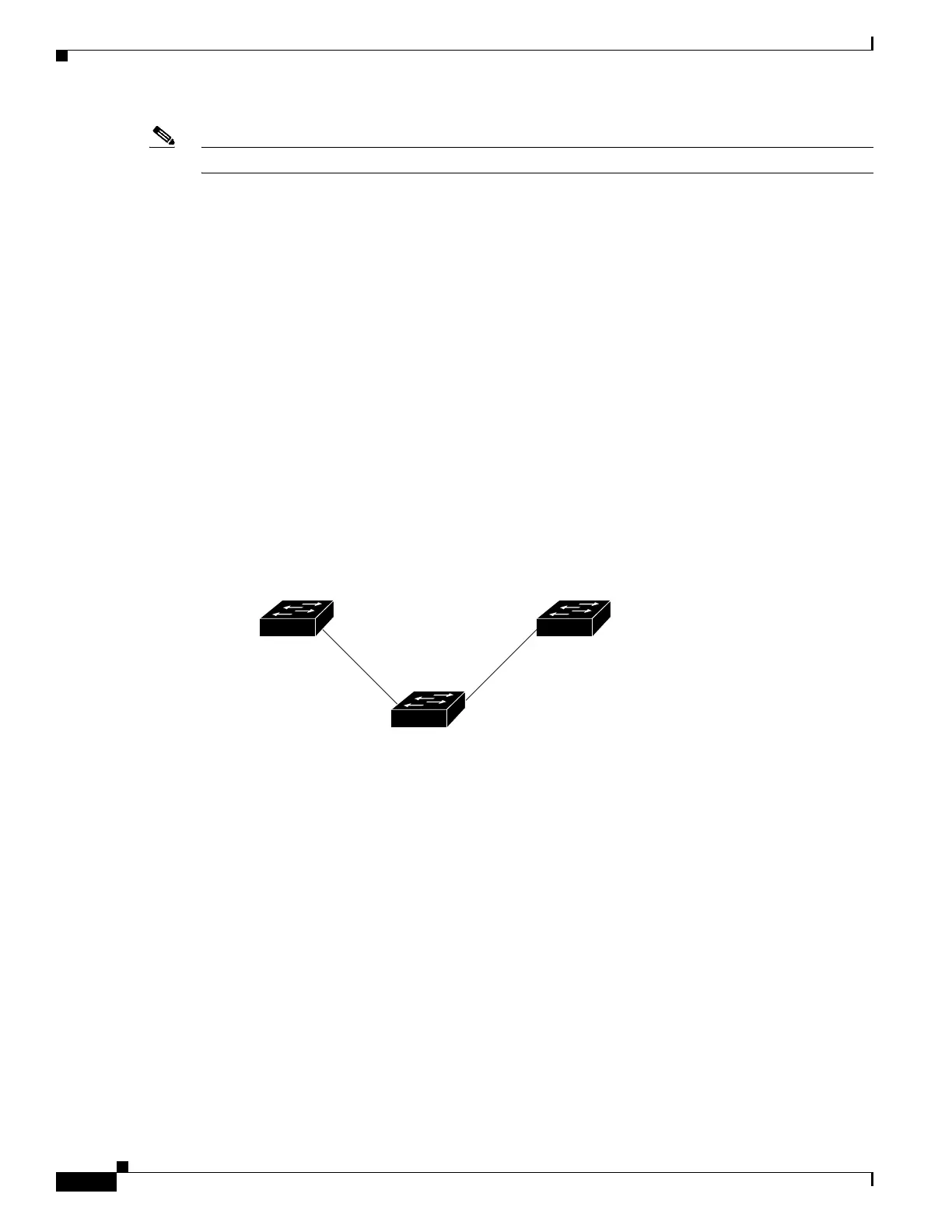24-2
Catalyst 4500 Series Switch, Cisco IOS Software Configuration Guide - Cisco IOS XE 3.9.xE and IOS 15.2(5)Ex
Chapter 24 Configuring Flex Links and MAC Address-Table Move Update
About Flex Links
Note The Catalyst 4500 series switch supports a maximum of 16 Flex Links.
You configure Flex Links on one Layer 2 interface (the active link) by assigning another Layer 2
interface as the Flex Link or backup link. When one of the links is up and forwarding traffic, the other
link is in standby mode, ready to begin forwarding traffic if the other link fails. At any given time, only
one of the interfaces is in the forwarding state and forwarding traffic. If the primary link fails, the
standby link starts forwarding traffic. When the active link reactivates, it enters standby mode and does
not forward traffic. STP is disabled on Flex Links interfaces.
In Figure 24-1, ports 1 and 2 on switch A are connected to uplink switches B and C. Because they are
configured as Flex Links, only one of the interfaces is forwarding traffic; the other is in standby mode.
If port 1 is the active link, it begins forwarding traffic between port 1 and switch B; the link between port
2 (the backup link) and switch C is not forwarding traffic. If port 1 shuts down, port 2 activates and starts
forwarding traffic to switch C. When port 1 reactivates, it enters standby mode and does not forward
traffic; port 2 continues forwarding traffic.
You can also choose to configure a preemption mechanism, specifying the preferred port for forwarding
traffic. In Figure 24-1, for example, you can configure the Flex Links pair with preemption mode so that
after port 1 reactivates in the scenario, and it has greater bandwidth than port 2, port 1 begins forwarding
after a duration equal to the preemption delay; and port 2 becomes the standby. You do this by entering
the interface configuration switchport backup interface preemption mode bandwidth and switchport
backup interface preemption delay commands.
Figure 24-1 Flex Links Configuration Example
If a primary (forwarding) link shuts down, a trap notifies the network management stations. If the
standby link shuts down, a trap notifies the users.
Flex Links are supported only on Layer 2 ports and port channels. Flex Links are compatible with
promiscuous trunks. It is not supported on isolated PVLAN trunks.
VLAN Flex Links Load Balancing and Support
VLAN Flex Links load balancing allows you to configure a Flex Links pair so that both ports
simultaneously forward the traffic for mutually exclusive VLANs. For example, if Flex Links ports are
configured for 1 to100 VLANs, the traffic of the first 50 VLANs can be forwarded on one port and the
rest on the other port. If one of the ports fail, the other active port forwards all the traffic. When the failed
port reactivates, it resumes forwarding traffic in the preferred VLANs. In addition to providing the
redundancy, this Flex Links pair can be used for load balancing. Also, Flex Links VLAN load balancing
also does not impose any restrictions on uplink switches (Figure 24-2).
Switch A
Uplink
switch B
Port 1 Port 2
Uplink
switch C
116082

